Taiwan
Taiwan wind alliance to complete first project in 2013
Taiwan will have its first offshore wind farm in Changhua County, central Taiwan by 2013.
Crossing installs tracking system for Taiwanese solar firm
Crossing Automation has completed installation of a material tracking system for a Taiwanese solar cell manufacturer. It consists of its Auto ID and automated tracking system software, Smart Storage asset tracking and Smart Storage racks. As part of the project, Crossing developed customized ATS software for solar cell carriers throughout the fab, carrier racks were incorporated with additional sensors to ensure proper placement on the rack, and the solar rack design and the layout itself was developed with input from the customer.
Neo Solar launches 2 crystalline products
Neo Solar Power launched two new high-efficiency products, multi-crystalline Super17” and mono-crystalline “Perfect18”. Both products debuted in the “Intersolar 2010” in Munich, Germany in June 2010 and were highly appreciated by the customers. The Hsinchu, Taiwan-based NSP’s newly launched 6 inch multi-crystalline “Super17” has breakthrough average conversion efficiency of above 17 per cent. “Super17” demonstrates panel makers the potential to increase power output to 250W, using 60-cell configuration. In addition, NSP’s 6 inch square mono-crystalline “Perfect18” with the “full square wafer” not only increases the active area by more than 2per cent compared to the conventional “pseudo-square” with the cut-off corners but also demonstrates extremely low light induced degradation. “Perfect18” has superior average efficiency of above 18%. With superior power density, “Perfect18” will be able to provide panel power output of 260W, using 60-cell configuration. “These two ideal solutions are recognition of our efforts in strengthening R&D and enhancing production knowhow in producing high quality and high efficiency cells,” said Dr. Quincy Lin, Chairman of NSP.
Neo Solar to get 3-year wafer supply from GCL-Poly
NSP will get 350 MW of solar wafers from GCL-Poly from the fourth quarter of 2010 to the end of 2013. Neo Solar Power’s signing of a 3-year wafer supply contract with GCL –Poly further consolidated the long-term strategic relationships between both sides. This long-term cooperation sustains both companies on production capacity and business operation, leading to significant expansion on global presence and a win-win situation.
Chubu to help design Taipower plant
Taiwanese engineering firm GIBSIN Engineers, Ltd. commissioned Chubu Electric to provide design support consulting services for its Taipower project. GIBSIN has been successful in its bid to conduct facility replacement work for Units No. 1 and 2 of Taiwan Power Company's Talin coal-fired thermal power plant.
TEPCO's 3rd Taiwan IPP proj starts commercial operation
The Star Buck Thermal Power Station, one of the 2005 Taiwanese government IPP projects for which Taiwan Cogeneration successfully acquired the bidding rights, has commenced operations.
Taipower's renewable energy
Q1. When did Taipower enter its first foray into renewables and what was behind the decision to invest in renewables?
Sparks fly as Taiwan plugs into the resurgence of a power giant
Q. How are carbon caps affecting the growth of Taiwan's power sector? On December 15, 2007, the Bali meeting in Indonesia set up a road-map for global carbon emissions after 2012. The goal is for CO2 emissions to be reduced by 25-40% in 2020 which is in comparison to those in 2005. The global consensus of greenhouse gases reduction will definitely impact on the trends and development of the power sector. To meet the requirements of greenhouse gas reduction the power industry must take into consideration the low-carbon issue in the operation of power plants and any new investment in the future. Second, is the application of information technologies in the power industry, in order to provide consumers with better quality and value-added services. The Smart Grid has been seriously considered, developed and deployed, particularly in view of the rapid growth of renewable energy and distributed power sources. Third, is the establishment of ‘demand response' service systems to reduce the cost of power supply. ‘Demand response' is a win-win strategy, under which the power company provides ‘value-added' services based on customers' choice and at the same time, the system peak load can be minimised and the capital investment or power purchase can be reduced. Q. In the midst of the liberalisation of Taiwan's electricity market and high fuel costs, what is Taipower doing to cope with Taiwan's increasing power demand? The soaring prices in the international fuel market imposed serious financial impact on Taipower's operation. Taipower must cope with this difficulty and be prepared for the challenges of the electricity market liberalisation. Taipower will continuously implement various strategies for reducing costs and enhancing efficiency, such as the upgrading of power facilities, working processes, streamline, manpower strengthening, management improvement and power dispatch optimisation, etc. Taipower will provide customised and diversified services to customers based on their demand, and will establish a mutual trust and a mutually dependent relationship with customers. Taipower will do its best to win customers' loyalty by constantly improving the service standards in order to maintain its market share. To provide a high-quality power supply, which is a requisite for modern life and high-tech industries, Taipower will not only augment its power supply infrastructure but also upgrade its operation of transmission and distribution grid. Finally, Taipower is determined to create a safe and healthy environment. Taipower will not only take care of its stockholders' interests but also work on maximising environmental protection. Taipower is promoting energy conservation to control carbon emission, and will endeavor to comply with its social responsibities as a social citizen. Taipower will build up its core competencies and upgrade its core technologies through the innovation of processes, improvement of technologies and the application of R&D results. Q. What are the new technologies being developed by Taipower and how will these technologies bring much-needed change to the power sector? In response to the requirement of GHG reduction, Taipower wishes to deploy clean-coal technology in the future. Taipower has surveyed and paid much attention to the development of Integrated Gasification Combined Cycle (IGCC) and Carbon Capture and Storage (CCS) technologies and its potential hurdles to commercialisation. Taipower has launched a feasibility study to evaluate the introduction of IGCC and CCS technologies to Taiwan and is also establishing a Smart Grid. In the wake of the booming development in renewable energy, Taiwan power system will face the pressure of various distributed generations to be integrated into the power grid. Taipower has conceived a ‘Smart Grid Roadmap' for the upcoming 20 years. It schedules to complete four objective areas which include security and grid reliability, energy efficiency, customer service quality, and distributed generation integration and two support platforms including communication protocols integration and resources sharing-platform in three phases short-term, mid-term and long-term. In order to upgrade the ability of the grid to respond to load demand and to strengthen the capability and reliability of the transmission system, Taipower will install STATCOM of FACTs system and/or back-to-back HVDC system at some extra high voltage substations. The information technologies related to distribution systems are under way to be integrated by the design, construction, maintenance and system dispatch of the distribution system. The application of new users, customer services and metering and billing of the energy sale system. The call centre system and the business operation core system. The promotion of the Automation Metering Information Program. The establishment of the fault detection, insulation, and service restoration (FDIR) Feeder Automation System. Q. What difficulties does Taipower face in terms of power generation, electricity market liberalisation and CO2 reduction? Taipower will evaluate the mix of power generation types in its power system from time to time to optimise the balance among security, economic supply and CO2 reduction. The liberalisation of the electricity market is a long-term policy of the government in Taiwan. In order to cope with the challenges in a competitive market, Taipower will endeavour to improve the quality of customer service and power supply to win customer's loyalty. Taipower is doing its best to cut down expenses, enhance efficiency and diversify business areas. Taipower also faces the soaring prices of the energy market and the uncertainties of energy supply. Taipower will review its fuel purchase contracts and strategies to appropriately respond to the market change, look for opportunities for overseas energy investment, build new bulk-carrier vessels for coal freight and promote the conversion of the domestic natural gas pipeline system into a ‘common carrier' in order for Taipower to embark on the import of LNG for its own use. Although Taiwan is not a treaty country of the Kyoto Protocol Agreement, the government pledged to take all possible measures to reduce greenhouse gas emissions. To cope with the challenge of carbon dioxide reduction, Taipower will intensively develop renewable energy and closely monitor the development of low carbon technologies worldwide. Q. With power supply security and sliding efficiency two major issues affecting Taiwan's power sector, what is Taiwan doing to confront such issues? The major issues concerning Taiwan and its power sector are the security of power supply and energy utilisation efficiency for all sectors and industries. Other issues include, CO2 emission control for the greenhouse effect and the sustainable development of the 3 E's, i.e. Economy, Environment and Energy. Some issues that need to be addressed by Taiwan's power sector include the introduction of a fair competition mechanism to cope with Taiwan's liberalised market, a reasonable electricity tariff system, transparent regulation and the risk management of uncertainties in the development of technologies. Q. Being Taiwan's monopoly electricity supplier, why is Taipower limiting the diversity of the power sector? Being a state-owned public utility, Taipower must comply with all the related laws, regulations and orders in its operation. Some of the laws and regulations may restrain Taipower from diversifying its business as flexibly as a private enterprise. Under these limitations, Taipower still has various strategies to diversify its business areas by providing services of operation, maintenance, and employee training and instrument or equipment tests for IPPs power plants. Other strategies include setting up join ventures or subsidiaries for co-generation and overseas coal mine development, engaging in related businesses, including investment in power plant and power facility maintenance overseas and security business and revitalising properties for parking services or buildings for advertisement. Q. What changes do you predict for Taiwan's power sector in the next decade? It will change under the global concern for climate change and a series of sustainable development policies worldwide. The power sector is developing the technologies of ‘low-carbon' or ‘no-carbon' power generation, including renewable energy, advanced nuclear power and integrated gasification combined cycle (IGCC) power plants. Regarding the renewable energy development in Taiwan, Taipower will aggressively promote wind power and solar energy generation. Some problems that we see for these generation methods include wind power being subject to weather change and solar energy requiring wide-spread installations and bi-directional energy management for day and night generation. The development for wind and solar power will be aimed at distributed generation and electrical network reconfiguration, in order to mitigate their impacts on the power system. For nuclear power development, Taipower will review current nuclear power policy and make recommendations to the government when it is necessary. The development of nuclear power generation in Taiwan will be affected by factors such as the energy policy, operational safety, waste disposal and construction costs. Regarding gas-fired power generation, the government plans to raise the ratio of gas-fired power capacity to 26% by 2020. However, gas-fired power plants will be affected by the supply stability of liquefied natural gas (LNG) in the global dash for LNG. For coal-fired power generation, Taipower will introduce new supercritical generation units with a technology of carbon capture in the future. In the long-term, Taipower will consider the introduction of IGCC with carbon capture and storage technology. Q. What is Taipower doing as a power utility to comply with the industry's notoriously strict environmental standards ? Taipower has adopted various measures to develop non-carbon or low-carbon technologies in renewable energy and the efficiency of energy use in compliance with the government's energy policy. Some of these measures include the implementation of plans for renewable energy development, the enhancement of power plant operations, the promotion of white-light LED lighting and the promotion of energy conservation. Q. What are the new energy sources being advocated by Taipower? Taipower is advocating advanced photovoltaic systems, including high concentration photovoltaic and thin-film photovoltaic technologies, wind power with forecasting systems and high temperature fuel cell systems. Some others include technologies such as fuel cell, energy storage applications, ocean thermal energy and also marine current energy.
Ma Welcomes the dawning of a new era for Taiwan's Power sector
It may already feel like ancient history, but the soon-to-be-ended office of Taiwan's former President, Chen-Shui Ban, was witness to one of the most turbulent times in Taiwan's recent history. Chen's presidency was typified by frosty relations with mainland China, which included daily missile threats and political propaganda. Taiwan's power sector also became a victim of Chen's presidency as the island's power plants suffered from swelling power demands and market fluctuations. Despite intergalactic scuffles reminiscient of a page from a Star Wars film script, the cross-strait relations saga seems to be drawing to a close with Taiwan declaring the Kuomintang's Ma Ying-jeou as President. During his race for the presidency, Ma signalled a dramatic policy shift for Taiwan by announcing his intention to boost Taiwan's cross-strait relations with China. The Kuomintang's stunning election victory on March 22nd, marked a key milestone in cross-strait relations, but is Ma the man to patch things up and lift Taiwan's power sector from the doldrums? Taiwan's power sector is in the doldrums due to high power demands, a reliance on imports, fluctuating energy prices, economic red-tape, icy cross-strait relations with mainland China and the legacy of former President Chen Shui-Ban. Taiwan's power struggle Taipei 101 is struggling to live up to its job description as the night-light of Taipei as Taiwan's grid battles to cope with its dwindling electricity resources and escalating power demands. Taipower, as the sole grid operator pumps 75 percent of the island's electricity into Taiwanese homes, sustaining the lifestyles of 23 million people island-wide. In early 2008, during the term of former President Chen Shui-Ban, Taiwan's government failed to process a series of power plant permits due to applicants demanding inflated prices, which the state-owned Taipower subsequently refused to pay. "The problem isn't in us but in the companies, the prices they ask for are too high," said Clint Chou, a spokesperson from Taipower. However, if the bidders succeeded in getting permits from the government, they would have been tasked to build power plants and sell electricity to Taipower. Taiwan's escalating power demand took a turn for the worse this year, climbing to a record high and decreasing spare capacity at peak demand times to 5.13%, a percentage which was well below the government's goal of 16 percent. Taiwan's power sector is made up of an eclectic mix of energy sources including 55% coal, 18% nuclear, 17% natural gas, 5% oil and 5% renewable energy. But, the island's unhealthy reliance on oil and gas imports is making Taiwan increasingly sensitive to energy price fluctuations. In terms of this alarming trend, Taiwan's government is taking the proactive approach by pushing for 10% of its energy resources to come from renewables by 2010, thus doubling its current quota of 5%. But, the long list of problems facing Taiwan's power scenario begs the question, will Taiwan cope with its swelling power demand and put its besieged power sector back on-line? The resurgence of Taiwan's power sector seems to be taking shape with the introduction of new developments in the realms of wind, solar and nuclear power. Taiwan has an embarrassment of riches in terms of wind power resources, with huge on-shore and in particular off-shore capabilities. Taiwan is in the process of installing a number of American and German built wind farms on the island. Solar power is beginning to show some promise as a new energy source for Taiwan's power sector and is likely to add a key element to its growing mix of renewables, which makes up 5% of its energy sources. Nuclear power is the star of the show in Taiwan's bold new energy mix and is the leading energy source in Taiwan's plans for the future of its power sector. Taipower currently operates three nuclear power stations in Taiwan, with a fourth nuclear power station due for completion in 2009. It's not easy being green "It's not easy being green" may be the catchcry of Kermit on the children's programme Sesame Street, but Taiwan's power sector it seems is thinking the same thing. Taiwan's ecosystem suffers from a dearth of pollution problems due to its high population density and smog-producing factories and vehicles in cities including Taipei, Tainan and Lin Yuan. Water pollution is still a serious issue for the island's ecosystem with up to 90% of Taiwan's sewage being dumped into its waterways. Starting to feel the pinch from Taiwan's substantial pollution problems, the government introduced the mandatory use of unleaded petrol and started the Environmental Pollution Agency to ease the environmental pain. The decline in soil pollution and waste disposal proves that there are some positives for Taiwan's ecosystem. Soil pollution has been reduced by the removal of heavy industry and waste disposal looks to be a thing of the past with the advent of Taiwan's recycling move ment. Fuelling Taiwan's comeback Taiwan's liquified natural gas imports look set to increase by as much as 43 percent this year, helping to relieve the stress caused by Taiwan's surging power demands. "Natural gas imports have gone from an oversupply to a shortfall," said Jane Liao, General Manager of CPC Corp, who is planning to increase its gasoline prices by NT$2.4 (8 cents) per litre. In order to meet the challenges of Taiwan's surging fuel costs, Taipower is planning to raise its prices by as early as June 2008, marking its second increase in 25 years. Taipower is required to boost its tariffs by as much as 48 percent this year, due to surging fuel costs and electricity prices, if it fails to do this it will record a loss of NT$130 billion ($4.3 billion). Taipower has plans to seek government approval for the tariff increase after Ma takes office on the 20th May. Should this tariff increase be appproved, it will mark a sign of things to come for Taiwan under Ma's new government. Since his March 22nd election victory, Ma has been speaking on a platform of bold policy initiatives, including the scrapping of fuel-price caps, the expansion of nuclear power and the inclusion of an energy tax. Ma, in a radical new plan, wants Taiwan to rely on nuclear stations for 20 percent of Taiwan's electricity, a move which could significantly reduce Taiwan's emissions. "Under the principle of saving energy and reducing carbon-dioxide, nuclear energy may be an inevitable choice," said Kuomintang's economic advisor, Steve Hsieh. Ma's new way of thinking is becoming popular in Taiwan, considering former President Chen's strategy to phase out nuclear power as a result of government scare campaigns about radioactive waste. In 2050, Taiwan's carbon dioxide emissions are predicted to drop to as low as 50 percent of its 2000 levels. In January 2008, coal contributed 46 percent to Taiwan's electricity mix, in comparison to the 23 percent sourced from Taipower's nuclear power stations. While nuclear power is the way of the future for Taiwan's growing power sector, it will only account for 5 percent of Taiwan's total power capacity by 2025. However, the portion of coal-fired power could rise to as much as 50 percent. Kuomintang returns power The spirit of Chiang Kai-Shek seems to be alive and well in the new-look Kuomintang, but can Ma learn from the teachings of the Kuomintang's legendary sage and bring balance to Taiwan's power sector? Ma's decisive March election victory marked a key milestone in the resurgence of Taiwan's power sector. Ma's radical policies look set to revolutionise Taiwan's power sector through a decrease in red-tape via the liberalisation of the power sector and an increase in potential investment from the mainland. Should Taiwan at last bridge this cross-straits gap, Taiwan's power sector will stand to benefit from mainland China's extraordinary potential and economic growth. "The KMT's promised policy agenda could introduce favourable economic and geopolitical dynamics in the next four years," said Aninda Mitra, VP/Senior Analyst from Moody's Sovereign Risk Unit. However, Ma seems to be in a difficult position as he must learn to balance Taiwan's economic prospects with mainland China and the defence of Taiwan's de-facto state of sovereignty. Since the Communists expelled the Kuomintang in 1949, Taiwan's Republic and China's PRC have battled over claims to Taiwan's sovereignty. "There's only one China in the world and Taiwan is an inalienable part of Chinese territory," said Qin Gang, spokesperson of the Chinese Foreign Ministry. However, Ma's exciting blueprint for Taiwan's future looks destined to boost cross-strait relations and bring Taiwan's power sector back from the brink.
Ma welcomes the dawning of a new era for Taiwan’s power sector
Zhang Yimou's acclaimed Chinese film Hero starring Jet Li seems to have more to do with cross-straits relations than meets the eye. Yimou's use of the sensitive wording ‘Our Land' at the climax of Hero was widely criticised by Taiwanese academics and celebrities alike for what they say gives gravitas to the doctrine that Taiwan is still ruled by the People's Republic of China despite Chiang Kai-Shek's Kuomintang officially breaking away from the mainland in 1949 into what Taiwanese now know as the Republic of China.
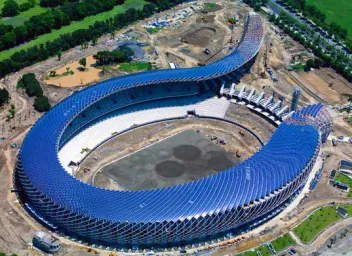
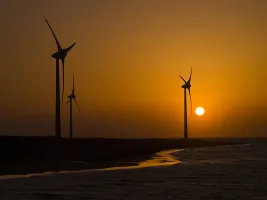


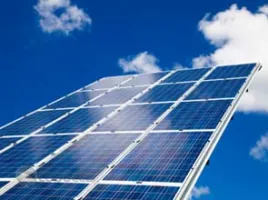
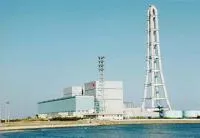

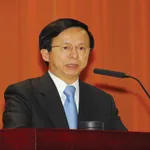
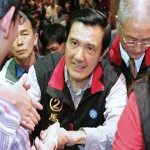

 Advertise
Advertise














